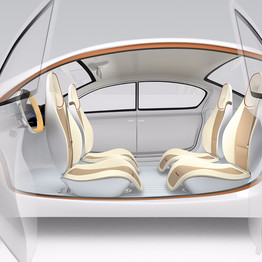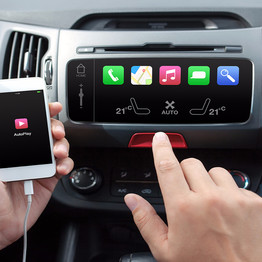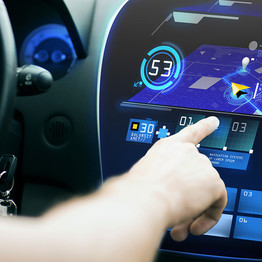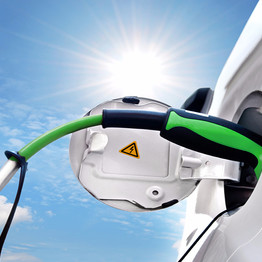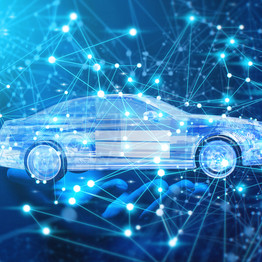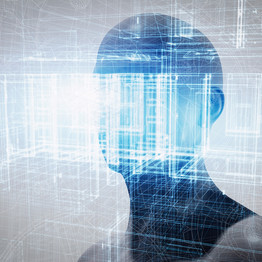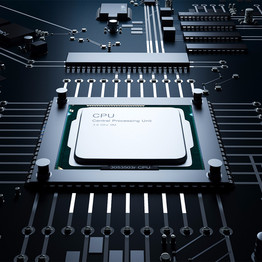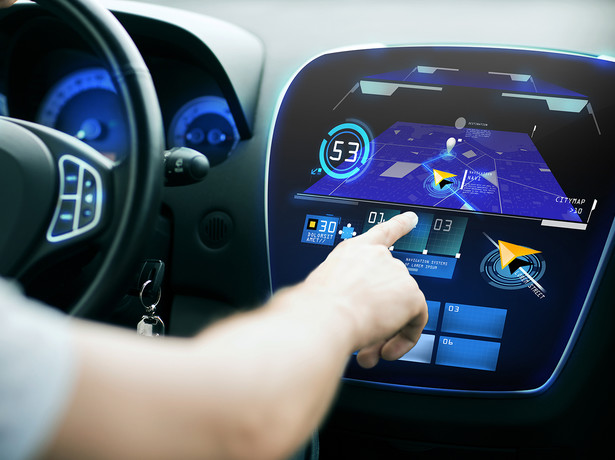Approximately 20 years ago the automobile industry began developing integrated operating concepts for functions based on displays (radio, CD, telephone, navigation, vehicle functions, later others such as media and connectivity).
The age of iDrive, MMI, command, PCM, RNS etc. had begun.
In the first generations of these systems there was still no uniform trend in view with regard to the predominant input elements. Some manufacturers settled on push and rotary switch units, others settled for the touch screen early on, some on a mix of both principles.
Even if this non-uniform development has still not concluded, more and more systems may arrive on the market over the course of the years based on the touchscreen, because this operating principle has simply become the dominant element for operating and display in the overall consumer world.
Though entirely optimal for application in the automobile – here other conditions simply predominate based on the dynamics of movement and the required focus on attention while driving – touch systems are not, or not yet being used.
Despite that, I am convinced that the principle will become increasingly common.
The operating concept in the vehicle, however, will not use one input medium only. Operating will continue to be multimodal and this trend will even intensify. New technologies will contribute to continuing the perfection of operation and display in the automobile and to adapt to customer needs.
Examples for new technologies associated with operating concepts in the vehicle:
- Touchscreen with haptic feedback
- Eye tracking
- Lip tracking
- Gesture operation
- New type projection methods with heads-up displays
- Transparent and curved displays
- Personalization- and suggestion functions
- Easy mode and advanced mode (analog operating concepts with digital cameras)
- Digital language assistants based on artificial intelligence for total natural speech operation and communication
The latter technology – also based on the further, rapid-paced advances in semiconductor technology – in connection with artificial intelligence will be the greatest revolution and the greatest step forward in relation to improving operational control in the automobile.
Completely natural language operation while driving, that is, no longer being interfered with by dialects, side conversations or disturbing noise, will become reality step by step in coming years.
One of the most important challenges will include integrating the vehicle into the entire digital world experience of the customer and not the reverse. Customers today enjoy a digital user experience on consumer devices that they would no longer wish to miss out on in a car.
The merger of the worlds of experience into a digital, end-to-end user experience will dominate development in the coming years.
Also here, in turn, a consistent, end-to-end architecture is an absolute, basic prerequisite.
Challenges /Experiences / Milestones
1997-2000: Conception and advance development of new operating and display concepts with the focus on the new Audi A8 (D3)
2002: World premier of the first fully integrated Audi operating concept – Audi multi media interface (MMI) in the new Audi A8 (D3)
2003-et. seq.: Rollout of the new Audi MMI on all vehicle series and all models
2009: First use of the further development of the Audi MMI as 3G+ in the new Audi A8 (D4), then rollout to other vehicle series and models
2009: World’s 1st touchpad for letter and number input in the new Audi A8 (D4)
2010-et. seq.: Rollout as touchpad / touchwheel on all vehicle series and models
2010-et. seq.: Introduction of haptic- /illumination process for all operating and display elements in the interior to target highest precision, tactile feeling, impression and value
2012: World’s 1st introduction of 3-D graphical technologies in the MMI as of the Audi A3 (Rightware Kanzi technology)
2014: World’s 1st Audi virtual cockpit in the new Audi TT
2014-et. seq.: Rollout of the Audi virtual cockpit in all new Audi models
2014: First application of the further development of the Audi MMI for integrated operation of the Audi virtual cockpit and the Audi MMI in the new Q7
2015: Euro Star award for Ricky Hudi for the development of the Audi virtual cockpit (Eurostar 2015)
2015-et. seq.: Development of the new generation of Audi MMI based on the touchscreen for future vehicles
